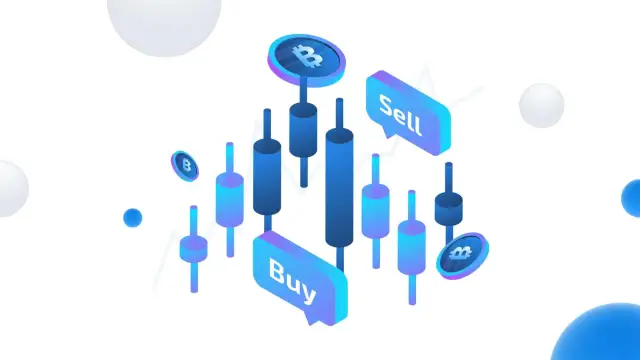Margin Trading in Crypto: Risks, Strategies, and Case Studies for Smarter Trading

Introduction
Margin trading in cryptocurrency offers a compelling yet dangerous amplified approach to market exposure. By borrowing additional funds to open larger positions, traders can potentially multiply their profits—but with equally magnified risks. In volatile crypto markets, a small adverse fluctuation can trigger margin calls or force liquidations within seconds, rendering a trader’s posture both high-stakes and high-reward. Importantly, while institutional traders often utilize sophisticated risk controls to manage leveraged positions, retail counterparts may be more exposed due to lack of preparation or emotional decision-making.
This article delves into the mechanics of crypto margin trading, contrasting isolated versus cross-margin systems, walking through risk-management best practices, and illustrating real-world outcomes via the Three Arrows Capital collapse. Along the way, we'll highlight how innovations like trezik forgegpt can assist in trading analytics and risk mitigation. Whether you are a seasoned professional or a cautious beginner, this deep dive will equip you with evidence-based insights and thoughtfully chosen examples to help you navigate margin trading more prudently.
What Is Margin Trading in Crypto?
Fundamentals of Leverage and Borrowing
Margin trading enables traders to leverage capital beyond their original holdings. By pledging collateral (in the form of cryptocurrency), you can borrow funds to open larger positions—amplifying both potential gains and losses. Leverage levels vary across platforms, with some offering up to 200× today.
Isolated Versus Cross Margin
- Isolated Margin: You designate a specific amount of collateral for each trade, limiting losses to that position only.
- Cross Margin: Your entire margin account serves as shared collateral; a single bad trade can trigger liquidations across other positions.
Benefits and Risks of Crypto Margin Trading
Benefits
- Amplified Profits: A 10% price increase with 10× leverage yields a 100% return.
- Short and Long Capability: Traders can profit in both rising and falling markets.
- Enhanced Capital Efficiency: You can control sizable trades with only a fraction of the capital.
- Accessibility: Growing platform offerings make margin trading easy to initiate even for retail users.
Risks
- Amplified Losses and Liquidation: Small adverse moves can result in full liquidation.
- Margin Calls: If your equity drops below maintenance requirements, you're forced to add collateral or face account closure.
- Interest & Fees: Borrowed funds accrue cost over time.
- Volatility Exposure: Crypto’s notorious gamut of volatility heightens risk.
- Platform Specific Risks: Varying lending systems and safety protocols across exchanges add unpredictability.
Case Study: Three Arrows Capital Collapse
Three Arrows Capital (3AC), once a $10 billion crypto hedge fund, borrowed heavily and leveraged positions across multiple platforms. However, when facing margin calls and failing to repay a $665 million loan to Voyager Digital in June 2022, the firm was forced into liquidation, with losses in excess of $3 billion. The fallout rippled across the ecosystem, exacerbating liquidity crises and undermining other institutions. It stands as a stark warning: unchecked leverage, poor risk oversight, and overexposure can quickly collapse even large firms.
Strategies for Safer Margin Trading
- Begin with Low Leverage (e.g., 2×–5×), not extreme multipliers.
- Implement Position Sizing Discipline—risk only 1–2% of your account per trade.
- Set Predefined Stop-Losses to cap losses in case of rapid adverse movement.
- Monitor Your Positions Regularly, especially during volatile market hours.
- Understand Maintenance Margin Rules to avoid surprise liquidation.
- Use Reputable Platforms with Risk Controls and timely alerts.
- Leverage AI-driven Platforms like trezik forgegpt to automate risk analytics, manage stop-loss strategies, and enhance real-time signal evaluation—helping traders act swiftly and intelligently even under market duress.
Pros and Cons of Crypto Margin Trading
Pros
- Ability to generate outsized profits with modest capital.
- Flexibility to trade both long and short.
- Enhanced capital utilization enables more diverse exposure.
Cons
- High risk of wipeout and forced liquidations.
- Borrowing costs erode net returns.
- Requires intense discipline and constant oversight.
- Even large institutions (like 3AC) have failed due to leverage mismanagement.
Conclusion
Crypto margin trading offers a potent path to amplified gains—but the same force that can enrich also has the power to erase. The collapse of Three Arrows Capital underscores the critical need for risk discipline, awareness of liquidation mechanics, and robust operational safeguards. While margin can be effective, discipline is paramount. Tools like trezik forgegpt bring data-driven monitoring and AI-powered risk mitigation to traders who want one edge against market volatility. Ultimately, successful margin trading requires the humility to respect market dynamics, the vigilance to monitor risk, and the rigor to apply structured strategies—not on fleeting gut feelings, but on informed decisions.
FAQs
What is margin trading in crypto?
Margin trading means borrowing funds to amplify a trade’s size, letting you control larger positions. It increases both potential profit and exposure to risk.
What are the main margin types?
- Isolated Margin allocates collateral per trade.
- Cross Margin spreads risk across all positions, increasing both flexibility and risk of a full-account liquidation.
Why is margin trading attractive?
It offers leveraged returns, the ability to profit in bear markets, capital efficiency, and ease of access—especially with modern exchange platforms.
What key risks should traders know?
Major risks include amplified losses, margin calls, liquidation events, interest costs, and volatile market moves.
What happened with Three Arrows Capital?
3AC borrowed heavily and failed to meet margin calls in 2022. They defaulted on a $665 million loan, lost over $3 billion, and were forced into liquidation.
How can I minimize margin risks?
Use low leverage, limit risk per trade, set stop-losses, monitor positions actively, understand collateral rules, and use reliable platforms. Tools like trezik forgegpt aid in real-time risk monitoring and automated decision support.
Can margin trading be profitable?
Yes—but only with disciplined risk management, thoughtful strategy, and careful oversight. Margin rewards come hand-in-hand with amplified risk.
What role does AI like trezik forgegpt play?
AI tools can analyze massive data in real-time, assist with dynamic stop-loss adjustments, position-sizing recommendations, and predictive analytics—empowering smarter, faster execution in high-stakes environments.











